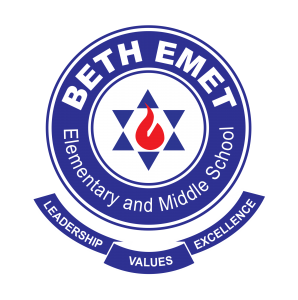Rosh Hashanah Traditions for Kids
“Rosh Hashanah isn’t just about being new, it’s about a change.”
Rosh Hashanah is the Jewish New Year, a time of reflection and repentance. It is one of the most important holidays in the Jewish calendar, and it holds special significance for us as we begin to reflect on the past year and look ahead to the coming year. Engaging children in meaningful Rosh Hashanah activities can help them better understand the unique traditions of this special holiday.
The History of Rosh Hashanah
Rosh Hashanah (Hebrew: רֹאשׁ הַשָּׁנָה, Rōʾš hašŠānā, lit. “head of the year”) is the Jewish New Year, which is celebrated two days in a row on the new moon of the autumn month of Tishri in the Jewish calendar. According to the teachings of Judaism, it is the traditional anniversary of Adam and Eve’s creation. From this day begins the countdown of the days of the new Jewish year.
A tradition during Rosh Hashanah is to blow a shofar horn. The act is seen as a sign of respect for God’s judgment and repentance. Another tradition is to eat traditional foods and recipes on this day, such as apples dipped in honey. The idea is that by eating these sweet foods, you will be blessed with a sweet new year.
How can children learn from Rosh Hashanah holiday traditions?
There are many traditions associated with Rosh Hashanah. Here are six engaging Rosh Hashanah activities to help children learn about the traditions:
1. The Shofar-Blowing
It is customary to hear the shofar being blown on Rosh Hashanah. However, if Rosh Hashanah falls on Shabbat, then the shofar will only be blown on the second day.
Have children create cardboard shofar. It is an excellent way for your child to participate in celebrating the holiday.
2. Tashlich
Tashlich represents “casting away sins.” Children can participate by creating a list of the sins they want to “throw away.” You can go to a body of water and throw bread crumbs or throw the papers away as well. This will help them better understand how the holiday represents a new year ahead.
3. Trying Out Something New
One more custom is trying something new before or after the holiday. Go or visit a new place you’d never been to before with family, involve your kids with a new hobby, play a new game with them, or just buy new clothes before the holiday and wear it for the first time on Rosh Hashanah.
4. Rosh Hashanah Greeting Cards
Creating Rosh Hashanah greeting cards can be a great activity for kids in both elementary and middle school. It’s a great opportunity to create something themselves and practice letter writing through a personal greeting message to loved ones, family members, and friends.
5. “Teshuvah”
At the beginning of the Rosh Hashanah holiday, there is a tradition to get together with family and discuss “Teshuvah.” The word “Teshuvah” refers to “Repentance,” which provides family members with an opportunity to apologize to one another for any unpleasant events that occurred between them during the previous year.
6. Rosh Hashanah Festive Recipes
A must-try Rosh Hashanah tradition is to eat slices of apples dipped in honey. This sweet combination represents bringing sweetness into the new year. Pomegranate seeds are also an important part of the celebration. Pomegranates are said to have 613 seeds, which symbolizes the number of mitzvot.
Another tradition is to bake sweet challah bread. It is commonly baked into rounds to symbolize the cyclical nature of life, with raisins signifying a sweet new beginning.
You can also make some unique apple-cookie pops with your children! They will love pouring the ingredients into the bowl and rolling and flattening the pops. By the time children reach upper elementary and middle school, they can try to cook something simple on their own (or with minimal supervision).
In Judaic Studies at Beth Emet School, we not only focus on providing knowledge and understanding but also on the student’s commitment to Judaic values. Jewish life is taught and experienced in school through holiday observances, Israeli education, Torah studies, life cycle events, and customs, as well as prayers. It is this connection between our Jewish heritage and our daily activities in school that helps foster a sense of Jewish identity in our students.




